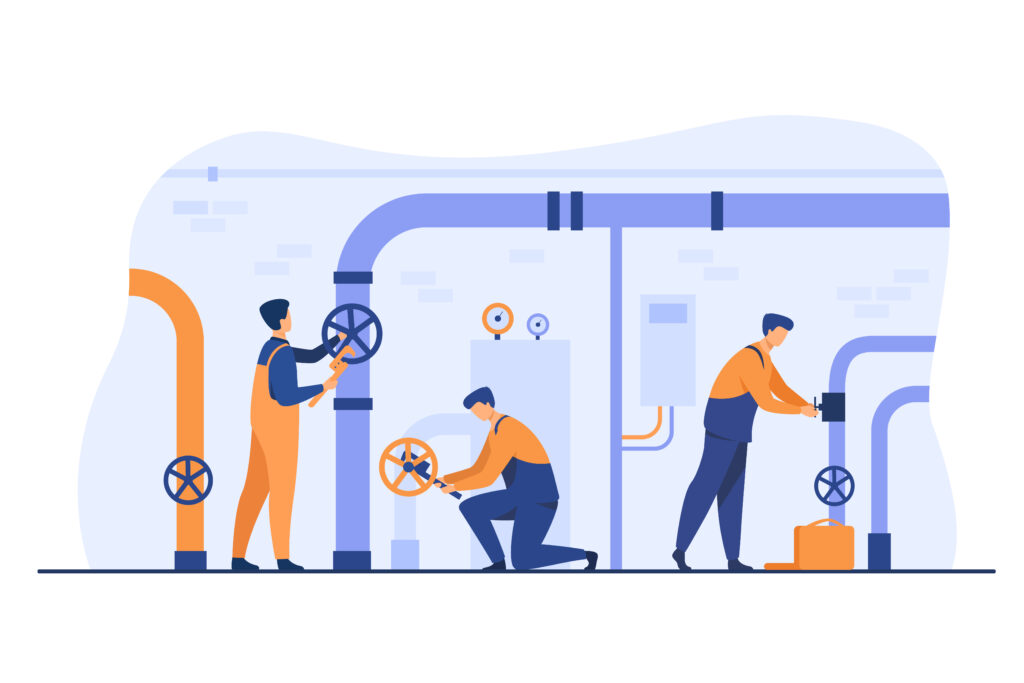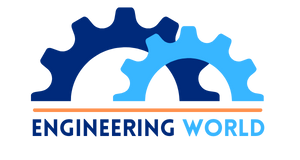In the dynamic realm of the engineering sector, the Essential Role of Piping Design Engineer stands out as indispensable. This article delves into the nuances of this crucial position, exploring the educational background required, the diverse responsibilities involved, and the impact on industrial projects.
Table of Contents
Importance of Piping Design Engineer
In the intricate web of engineering projects, Piping Design Engineers play a pivotal role in ensuring the seamless flow of processes. Their expertise extends to conceptualizing, planning, and implementing intricate piping systems that form the arteries of industrial operations.

Educational Background
Academic Requirements
Becoming a Piping Design Engineer requires a solid educational foundation. A bachelor’s degree in mechanical engineering or a related field is often the starting point. Theoretical knowledge is complemented by practical applications, setting the stage for real-world challenges.
Specialized Training
While academic qualifications provide a fundamental understanding, specialized training in piping design is crucial. Engineers often undergo certification programs to enhance their skills in using advanced design software and interpreting complex project requirements.
Responsibilities
Conceptual Design
One of the primary responsibilities is conceptualizing the piping layout. This involves understanding the project requirements, considering factors like fluid dynamics, and creating a blueprint that aligns with industry standards.
Material Selection
Piping Engineer need to be well-versed in material science. Selecting the right materials ensures durability, corrosion resistance, and compliance with safety standards.
Stress Analysis
The role also involves conducting stress analysis to evaluate the structural integrity of the piping system. This step is critical to prevent failures under varying operational conditions.
Software Proficiency
CAD Tools
Proficiency in Computer-Aided Design (CAD) tools is non-negotiable. Piping Engineer use software to create detailed designs, simulate scenarios, and identify potential issues before the actual implementation.
Simulation Software
Simulation software is another essential tool in the Engineer’s kit. It allows for virtual testing of designs, predicting performance, and optimizing the system for efficiency.
3D Modelling
Several 3D software tools are commonly used by engineers in plant design within the engineering field. These tools facilitate the creation, visualization, and analysis of complex plant layouts. Some of the popular software for plant 3D modeling are AVEVA PDMS, Intergraph SmartPlant 3D, AutoCAD Plant 3D, AVEVA E3D
Key Deliverables in Piping Design Engineering
Deliverables serve as the tangible outcomes of the Piping Design Engineering process. These documents and drawings are not merely paperwork; they are the blueprints that guide construction, ensure safety, and form the backbone of project success.
Piping Layout Drawings
Piping layout drawings provide a visual representation of the entire piping system, indicating the placement of pipes, supports, and other components. These drawings act as a roadmap for construction teams.
Isometric Drawings
Isometric drawings offer a three-dimensional view of piping components, aiding in understanding the spatial arrangement. They provide a more realistic depiction, facilitating smoother construction processes.
Material Specifications
Detailed material specifications outline the types of materials to be used in the piping system. This includes information on pipe material, fittings, valves, and any additional components, ensuring compliance with project requirements.
Stress Analysis Reports
Stress analysis reports assess the structural integrity of the piping system under various operational conditions. These reports guide design modifications to enhance system reliability.
Bill of Materials (BOM)
The Bill of Materials enumerates all the materials and components required for the project. It serves as a comprehensive list for procurement, ensuring that the right materials are sourced.
3D Models
While not a traditional drawing, 3D models provide a dynamic visualization of the piping system. They offer a virtual walkthrough, aiding in design validation and client presentations.
In conclusion, the deliverables from the Piping Design Engineering Department are the threads that weave the fabric of successful industrial projects. From meticulous drawings to comprehensive reports, each deliverable contributes to the efficiency, safety, and success of the endeavor. Collaboration with Other Engineers
Mechanical Engineers
Collaboration with mechanical engineers is common, especially in projects where the piping system interfaces with mechanical components. Seamless coordination ensures the integration of all elements.
Structural Engineers
Working in tandem with structural engineers is crucial to ensure that the piping system aligns with the overall structural integrity of the project. This collaboration guarantees the longevity of the entire system.
Regulatory Compliance
Codes and Standards
Piping Design Engineer must navigate a complex web of codes and standards. Adhering to these regulations is not just a requirement but a commitment to ensuring the safety and reliability of the designed systems.
Safety Guidelines
Prioritizing safety is paramount. Piping systems must be designed to withstand operational pressures while considering potential hazards, ensuring a secure working environment.
Project Management Skills
Budgeting
Beyond technical skills, Piping Engineers need project management acumen. This includes budgeting for materials, manpower, and unforeseen challenges that might arise during the project.
Timely Execution
Meeting project timelines is a testament to a Piping Design Engineer’s efficiency. Timely execution is critical, especially in industries where downtime can translate to significant financial losses.
Importance in Industrial Projects
Oil and Gas Industry
In the oil and gas industry, where precision is paramount, Piping Design Engineers contribute significantly to the success of projects. Their designs impact the efficiency and safety of operations.
Petrochemical Plants
Petrochemical plants rely on intricate piping systems for the processing and transportation of chemicals. Piping Design Engineers ensure that these systems meet the stringent requirements of the industry.
Challenges Faced
Complexity of Designs
The complexity of designs often poses a challenge. Piping systems must navigate through diverse terrains, handle varying pressures, and accommodate different fluids, demanding a high level of expertise.
Adherence to Standards
Striking a balance between innovation and adherence to industry standards can be challenging. Piping Design Engineers must navigate this delicate equilibrium to ensure optimal performance without compromising safety.
Growth Opportunities
Senior Design Roles
Experienced Piping Design Engineers can progress into senior design roles, where they oversee complex projects, mentor junior engineers, and contribute to the strategic direction of the engineering team.
Management Positions
For those with a penchant for leadership, management positions beckon. Piping Design Engineers can transition into project management roles, where they orchestrate entire projects from conception to completion.
Continuous Learning and Development
Keeping Up with Technological Advancements
The field of Piping Design is dynamic, with technology continually evolving. Engineers must engage in continuous learning to stay abreast of the latest advancements in design tools and methodologies.
Industry Networking
Building a network within the industry is not just advantageous but essential. Networking provides opportunities for collaboration, knowledge exchange, and staying informed about industry trends.
Impact of Piping Design on Project Success
Efficiency in Operations
Well-designed piping systems contribute to the overall efficiency of industrial operations. Streamlined processes reduce downtime, enhance productivity, and positively impact the bottom line.
Cost Savings
A meticulously designed piping system can result in cost savings. Efficient layouts, optimal material selection, and adherence to safety standards contribute to a project’s financial viability.
Future Trends
Automation and AI Integration
The future holds exciting prospects for Piping Design Engineers with the integration of automation and artificial intelligence. Smart systems that can adapt to changing conditions represent the next frontier.
Sustainable Design Practices
With a growing focus on sustainability, Piping Design Engineers are expected to embrace eco-friendly practices. Designing systems that minimize environmental impact is a key consideration for the future.
Conclusion
In conclusion, the Essential Role of a Piping Design Engineer in the Engineering Sector cannot be overstated. From conceptualization to execution, these professionals shape the backbone of industrial projects, ensuring efficiency, safety, and long-term success.
FAQs
- What qualifications does a Piping Design Engineer need?
- A bachelor’s degree in mechanical engineering or a related field is typically required, along with specialized training in piping design.
- How does software proficiency contribute to success in this role?
- Proficiency in CAD tools and simulation software is crucial for creating detailed designs, simulating scenarios, and identifying potential issues.
- Can a Piping Design Engineer work in different industries?
- Yes, Piping Design Engineers can work across various industries such as oil and gas, petrochemicals, and manufacturing.
- What challenges might one face in this profession?
- Challenges include dealing with the complexity of designs and maintaining a balance between innovation and adherence to industry standards.
- How can one enhance their career as a Piping Design Engineer?
- Continuous learning, staying updated on technological advancements, and building a strong industry network are key factors in career enhancement.

1 thought on “Essential Role of Piping Design Engineer in Engineering Sector”